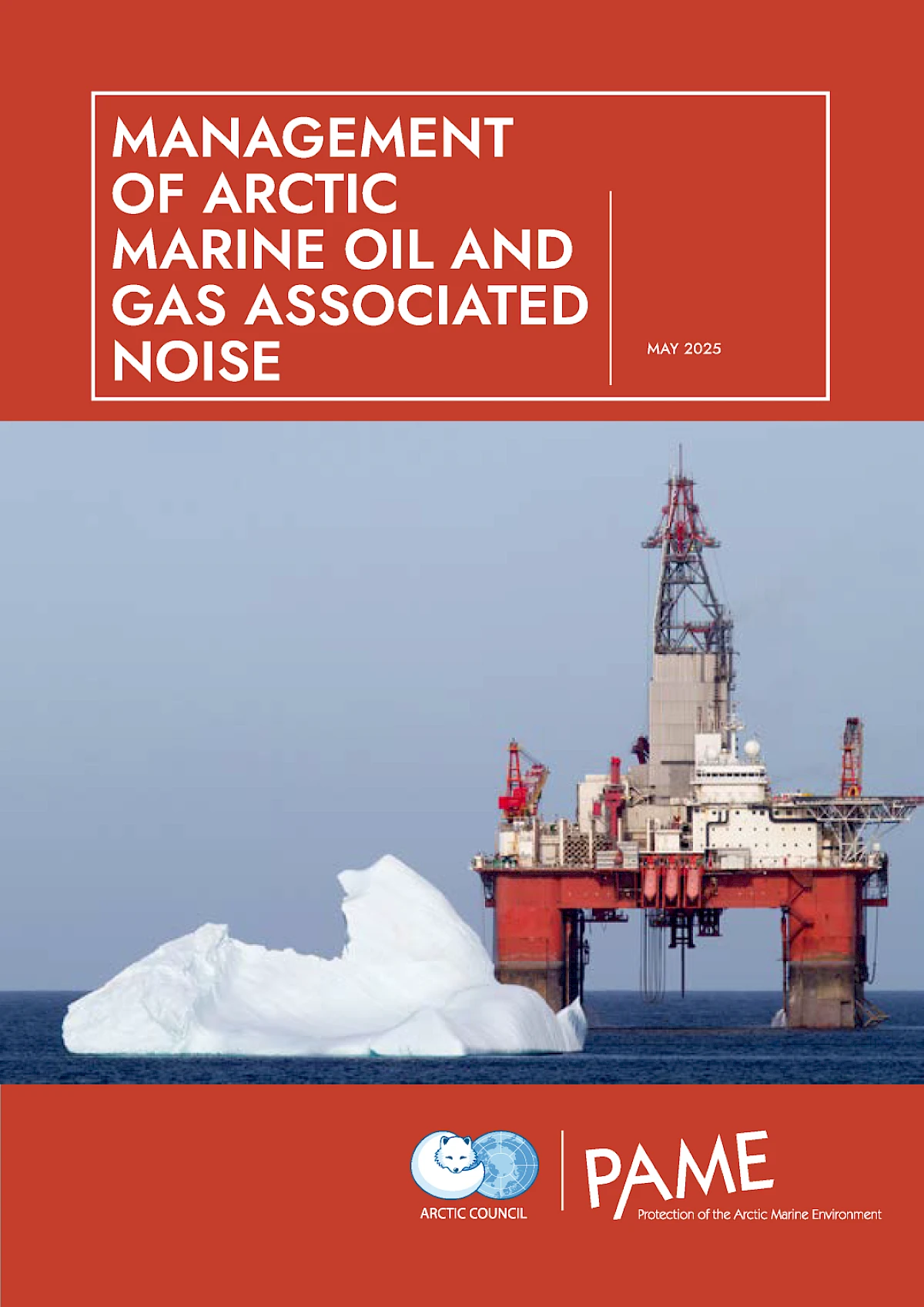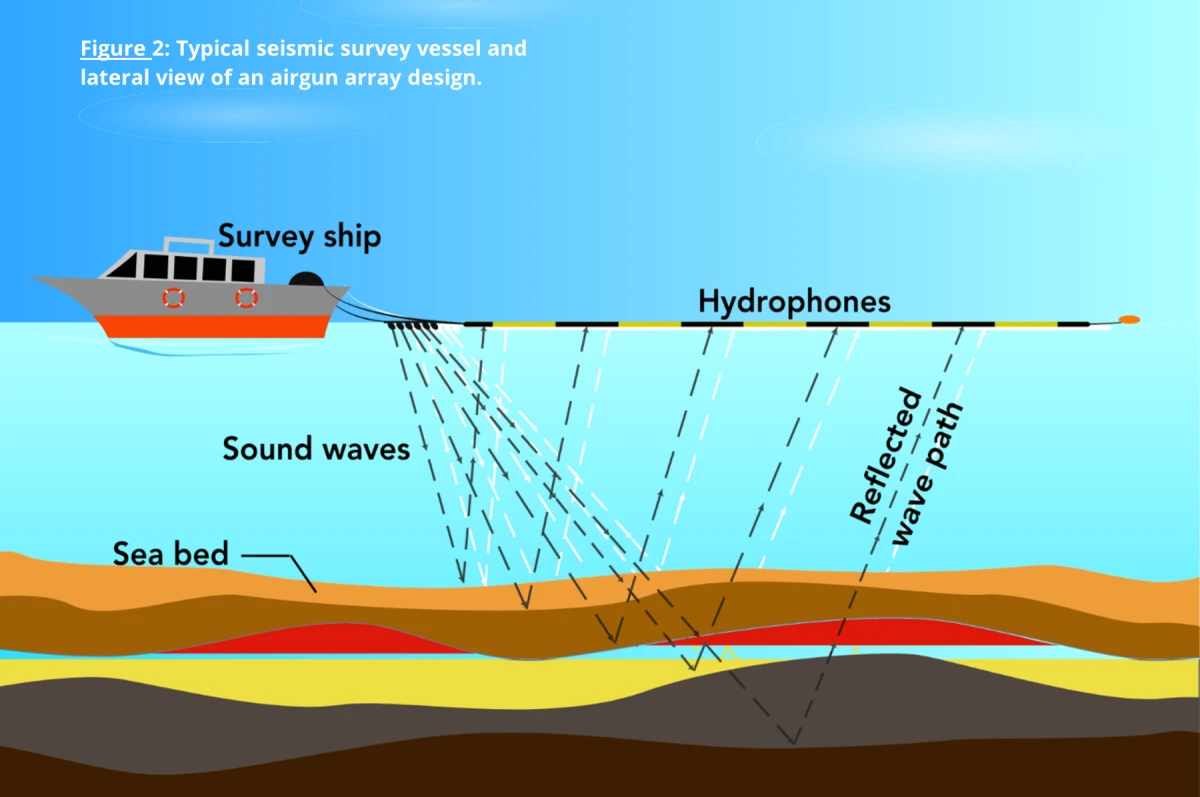
Management of Arctic Marine Oil and Gas Associated Noise
The continuation of Arctic marine oil and gas activities requires a better understanding of the sources of noise and the effects and potential effects of noise on marine mammals and fish. Arctic oil and gas activities contribute noise to the marine environment from the exploration through to decommissioning phases with such possible sources as: vessel traffic, seismic surveys, ice-breaker operations, trenching, drilling, production, and decommissioning operations.
PAME initiated a project, led by the United States, United Kingdom, and WWF, focusing on the Management of Arctic Marine Oil and Gas Associated Noise. This project aimed to:
- identify current practices for reducing or eliminating noise from offshore or nearshore Arctic oil and gas operations, and
- consider the necessity of specific noise-related guidance for these activities.
The project recognized that a better understanding of noise sources and their effects on marine mammals and fish is crucial, particularly concerning the potential impacts on Indigenous Peoples' subsistence activities, thus highlighting the importance of developing avoidance or mitigation strategies.
The Management of Arctic Marine Oil and Gas Associated Noise project provides an opportunity for participating Arctic states to share information about measures to mitigate the impact of noise on marine life and related human activities. Mitigation measures were considered across all phases of marine oil and gas operations. While vessels directly involved in marine oil and gas activities for construction, crewing, or icebreaking were included, ships transporting crude oil or gas were not.
Although the project focuses on oil and gas operations within marine areas of the pan-Arctic region (see Figure 1), some mitigation measures identified in this report are used for areas south of the Arctic Circle, e.g., the Norwegian Sea (Norway), offshore Labrador or Newfoundland (Canada), Cook Inlet (United States), or in other types of industrial marine activities (e.g., submarine pile driving in Swedish waters of the Baltic Sea). These measures were included to meet the project intent to gather information about the range of available measures for further discussion or consideration.
Project Approach
The following steps were completed for this project from 2021–2023:
- a questionnaire was sent to Arctic States requesting information on relevant noise management measures,
- supplementary research was conducted to identify relevant supporting literature and review the references provided in the questionnaire responses,
- a draft discussion document was circulated to questionnaire respondents to elicit input,
- follow-up calls were held with questionnaire respondents (regionally or individually),
- additional written comments were submitted by participating States, and 6) a draft report was prepared based on input from the calls and written comments and circulated for further review.
The questionnaire on noise management measures was sent in December 2021 to participants in PAME's Resource Exploration and Development Expert Group (REDEG), which consists of representatives of the Arctic Council.
Responses were received from Canada, Finland, the Kingdom of Denmark (including the Faroe Islands and Greenland), Iceland, Norway, Sweden, and the United States. Further input was provided by the Aleut International Association and Inuit Circumpolar Council, as well as the project co-lead WWF.
Report outline
- Introduction
- Project Approach
- Relationship To Other Pame Projects
- Background
- 2.1 Sources Of Noise From Offshore Arctic Oil And Gas Activities
- 2.2 Noise Impacts
- 2.3 Marine Oil And Gas Activities In The Arctic
- Regulatory Context
- Mitigation And Monitoring Measures
- Considering Noise Impacts In Project Approval Or Planning
- Communications And Engagement With Indigenous And Other Local Communities
- Seasonal And Geographic Restrictions
- Monitoring Noise Associated With Oil And Gas Activity
- Monitoring For Species Presence During Oil And Gas Activity
- Other Seismic Activity Procedures
- Opportunities For Further Collaboration
- References
- Annex I – Arctic State Guidelines Received Specific To Noise From Marine Oil And Gas Operations
 Arctic Council Working Group
Arctic Council Working Group 
